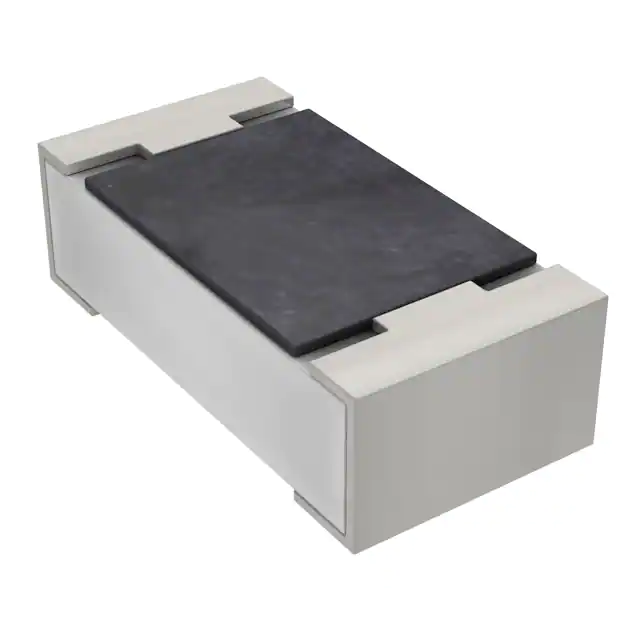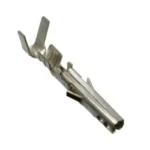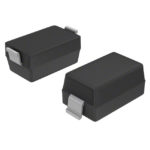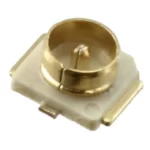The Role of Capacitive Impedance in AC Circuits: Why It Matters
Introduction to capacitive impedance
It is a type of electrical resistance that occurs in capacitors when they are connected to an AC circuit. A capacitor is a passive electronic component that stores electrical energy in an electric field. When a capacitor is connected to an AC circuit, it experiences a constantly changing voltage, which causes the capacitor to charge and discharge in response to the alternating current. This charging and discharging of the capacitor create an opposition to the flow of current, which is known as capacitive impedance.
It is measured in ohms (Ω) and is directly proportional to the frequency of the AC circuit. The higher the frequency of the circuit, the lower the capacitive impedance. This means that capacitive impedance is a variable value that changes with the frequency of the circuit.
What is AC circuit?
Before discussing capacitive impedance, it is important to understand what an AC circuit is. AC stands for Alternating Current, which is a type of electrical current that changes direction periodically. In an AC circuit, the voltage and current change direction and magnitude periodically, usually at a frequency of 50 or 60 Hz. AC circuits are used in a wide range of applications, including power transmission, lighting, and motor control.
In an AC circuit, the voltage and current are not always in phase with each other. This means that the voltage and current do not reach their maximum and minimum values at the same time. The phase relationship between voltage and current is an important factor that affects the behavior of circuits and their applications.

Capacitive reactance in AC circuits
Capacitive impedance is a type of capacitive reactance, which is the opposition to the flow of current caused by the capacitance of a circuit. Capacitive reactance is also measured in ohms and is inversely proportional to the frequency of the circuit. The formula for capacitive reactance is:
Xc = 1 / (2πfC)
Where Xc is the capacitive reactance, f is the frequency of the circuit, and C is the capacitance of the circuit.
Capacitive reactance is an important factor that determines the behavior of capacitors in AC circuits. As the frequency of the circuit increases, the capacitive reactance decreases. This means that the capacitor becomes more conductive at higher frequencies and less conductive at lower frequencies.
The role of capacitive impedance in AC circuits
Capacitive impedance plays a crucial role in AC circuits. It creates an opposition to the flow of current, which affects the behavior of the circuit. Capacitive impedance is also responsible for the phase relationship between voltage and current in capacitive circuits.
In capacitive circuits, the voltage leads the current by 90 degrees. This means that the voltage reaches its maximum and minimum values before the current reaches its maximum and minimum values. The phase relationship between voltage and current is important in applications such as power factor correction, where it is necessary to adjust the phase relationship to improve the efficiency of the circuit.
Capacitive impedance also affects the power factor of a circuit. The power factor is the ratio of real power to apparent power in a circuit. A circuit with a low power factor is less efficient than a circuit with a high power factor. Capacitive impedance can improve the power factor of a circuit by adjusting the phase relationship between voltage and current.
Understanding the phase relationship between voltage and current in capacitive circuits
The phase relationship between voltage and current in capacitive circuits can be understood by analyzing the behavior of a capacitor in an AC circuit. When an AC voltage is applied to a capacitor, the voltage across the capacitor lags behind the current by 90 degrees. This means that the voltage reaches its maximum and minimum values before the current does.
The phase relationship between voltage and current is important in applications such as power factor correction. In power factor correction, it is used to adjust the phase relationship between voltage and current to improve the efficiency of the circuit. By adjusting the phase relationship, the power factor of the circuit can be increased, which reduces the amount of reactive power and improves the overall efficiency of the circuit.
Capacitive impedance vs resistive impedance
It is different from resistive impedance, which is the opposition to the flow of current caused by the resistance of a circuit. Resistive impedance is measured in ohms and is not affected by the frequency of the circuit. The formula for resistive impedance is:
Z = R
Where Z is the total impedance of the circuit and R is the resistance of the circuit.
Capacitive impedance and resistive impedance can be combined to form the total impedance of a circuit. The total impedance of a circuit is the opposition to the flow of current caused by both the capacitance and resistance of the circuit.
How to calculate capacitive impedance
The formula for capacitive impedance is:
Zc = 1 / (2πfC)
Where Zc is the capacitive impedance, f is the frequency of the circuit, and C is the capacitance of the circuit.
To calculate the capacitive impedance of a circuit, you need to know the frequency of the circuit and the capacitance of the capacitor. Once you have these values, you can plug them into the formula to calculate the capacitive impedance.
Applications of capacitive impedance in real-life situations
Capacitive impedance is used in a wide range of applications in real-life situations. One of the most common applications of capacitive impedance is in power factor correction. In power factor correction, capacitive impedance is used to adjust the phase relationship between voltage and current to improve the efficiency of the circuit.
Capacitive impedance is also used in filters, where it is used to block certain frequencies of an AC signal. Capacitive impedance can be used in series with a resistor to form a high-pass filter, which allows high-frequency signals to pass through while blocking low-frequency signals.
Capacitive impedance is also used in capacitive touch sensors, which are used in a wide range of applications such as smartphones, tablets, and touchscreens. In capacitive touch sensors, the capacitance of the sensor is used to detect the presence of a finger or other conductive object.
Conclusion – why capacitive impedance matters in AC circuits
In conclusion, capacitive impedance plays a crucial role in AC circuits. It creates an opposition to the flow of current, which affects the behavior of the circuit. Capacitive impedance is also responsible for the phase relationship between voltage and current in capacitive circuits.
Understanding it is important in applications such as power factor correction and filter design. Capacitive impedance is also used in capacitive touch sensors, which are used in a wide range of applications. By understanding the role of capacitive impedance in AC circuits, engineers can design circuits that are more efficient and reliable.
CTA
If you have any questions about capacitive impedance or AC circuits, feel free to reach out to me. I am always happy to help fellow engineers and enthusiasts in the field.


